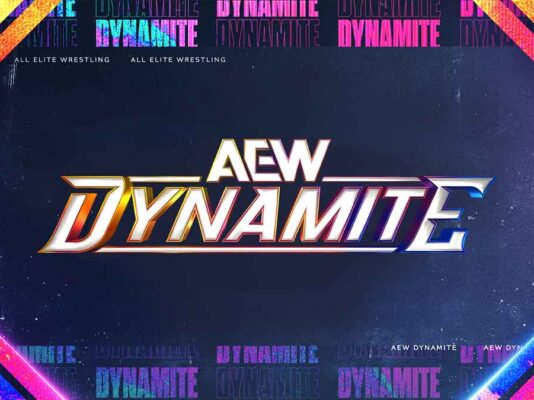
Nearly a quarter century ago, the dot-com bubble, increased investments based on the projections of money that could be made online as internet access looked to become more of a fixture as a household item, burst. A slew of companies, famously including pets.com, aired Super Bowl commercials that cost seven figures to run during the big game, found themselves out of business the following year. A laundry list of companies thought they were going to cash in on the use of technology to bring more products to consumers as more households got the chance to go online.
As they found out and what become a fascinating economic case study, if the market is oversaturated with too many similar products, the market will only support a limited number. It’s a very complex topic with multiple layers, but at the end of the day, it always comes down to supply and demand. Of course, spending is key within an organization as well, an unwise investment, perhaps an million-dollar Super Bowl ad during a year where websites flooded the broadcast, can be just as detrimental to the future of an organization as anything else since it’s a direct hit at the bottom line. Revenue and ultimately profit are the barometer for success. You can gross millions, but if you finish a dollar in the red, you’re out of business.
The startups found out that consumers were only going to spend a certain amount of cash online, especially when the concept of home delivery, which is almost the standard today, was a relatively new concept at the time. Something as simple as internet awareness and how websites were monitored at that point could’ve been a potential deterrent for shoppers to use their credit card on a web site.
But, as with any new market with the potential for money to be made, there will be organizations that attempt to get their piece of the pie and then the market will determine how many options will be viable commodities. That’s capitalism, and much of that blue print spans across different industries.
Within the past several years, particularly as technology continues to advance, the streaming landscape has been the primary market that has seen an influx of countless groups look to establish themselves as a profitable streaming platform. Similar to the dot-com craze, the streaming market was oversaturated, and also similar to the dot-com surge, the dynamics of streaming services saw some companies shut down, while others were purchased by existing groups.
It’s almost tough to keep track of what platforms fall under what banner at any given time, particularly as many of the groups that are acquired by larger organizations have their content added into an existing library. If you’re looking for a certain film or TV series, you have to search to find if it’s available anywhere, and if it is, do you already have an existing subscription for it? All of that is a really solid argument for why physical media should remain a staple for viewers,but that’s a different discussion for a different time.
At one point, it was thought that streaming was going to lead to the death of traditional television, and while there was undoubtedly a shift in media consumption, the notion that TV would somehow completely disappear is misguided. The standard of television is still the easiest way to consume media, and there’s more of a case for specific demographics to stick with it when some streaming platforms have become too convoluted. If anything, cable companies and media groups will have to adapt to keep standard television a reasonable option for viewers, which should benefit the consumer.
One of the ways that companies have done that is to merge under one platform, as a way to hopefully generate more revenue overall than dividing smaller pieces of the pie. The Warner Brothers Discovery merger was completed just three and a half years ago. Aside from moving the collection of television networks under one company, it put the content of those channels on the HBO Max streaming service.
This was important in the world of professional wrestling because All Elite Wrestling, the second-largest pro wrestling group in the world, is a part of the Turner networks with Dynamite on TBS and Collision on TNT. The AOL-Time Warner merger was one of the many reasons that WCW folded so it’s understandable that those within the sports entertainment industry would follow the Warner Brothers Discovery transaction to see how it might impact AEW.
Up until this point, there hasn’t really be any effect on All Elite Wrestling, outside of the fact that the television shows are streamed on HBO Max and the pay-per-view can be purchased through the service. However, recent news from the Warner Brothers Discovery could have a major impact on the status of AEW in the future, depending on the next steps that the corporation takes from purely a business perspective.
Less than four years after the merger, Warner Brothers Discovery has announced that it’s up for sale, citing “unsolicited interest” from multiple corporations. Reportedly, Comcast, Paramount, and Netflix are among potential buyers. Although, it was reported that Paramount’s initial offers were declined. The fact that the company is publicly making it know that it’s willing to sell implies that they are looking to cash out. Regardless of if that is to make money while they can or escape the debt to finish with some level of overall profit, the point is that the organization wants to step away of the media business.
The situation is a reflection of the media landscape, as several companies have invested millions, and in some cases, billions of dollars to secure the rights to content to be able to not only secure a portion of the streaming market today, but to theoretically set up the revenue source for the future. The numbers are different because of 25 years of inflation, but the business dynamics remain the same, as the online companies that invested millions of dollars to try to secure their piece of the pie from the potential internet sales that were said to be on the horizon. Of course, the streaming business has proved to be exponentially more complicated than the internet sales bubble of more than two decades ago. There are production costs, rights fees, and the necessity to maintain an amount of subscriptions to cover those expenses. That becomes more difficult with the increased competition for the streaming dollar. Plus, there are times when subscribers will cherry-pick certain content for a specific month before they cancel until there’s another series that they want to watch, as they have the option to binge watch content to maximize a subscription. For WBD, they lost the rights to NBA games this year, as the league will move to a combination of ABC, ESPN, NBC, and Amazon in the future.
Disney is probably the best example of this, as the entertainment powerhouse, which usually prints money from its variety of revenue sources and ventures, endured massive losses for several years on its streaming service before it finally made a profit this year. It remains to be seen if that trend continues, but the point is, different companies can only absorb that debt for so long until they have to look to offload it, Clearly, Warner Brothers Discovery is looking to get rid of the debt they’ve had from the previously mentioned merger.
Obviously, if the Warner group is sold to a corporation that has an agreement with WWE, it will undoubtedly have some type of impact on AEW. Does that mean that AEW is going to fold or won’t find a landing spot somewhere? No, but it goes without saying that it’s very doubtful that if Netflix, Comcast, or Paramount buy Discovery that All Elite Wrestling would continue to broadcast on any of those networks. This is where the diversity of WWE distribution is so important because not only does it give the company itself more exposure, it also realistically limited television networks that would want to make a deal with AEW. With the Paramount deal for the UFC under the TKO banner, even a corporation that isn’t directly linked to WWE, but TKO in general is enough to shut the door for All Elite Wrestling. Again, that’s not to say that AEW wouldn’t find a place to put their show, Dynamite still draws a consistent, albeit lower, number so there would be offers from other networks.
According to The Wrestling Observer’s Dave Meltzer, AEW has at least another two years on its current contact with the option for an additional year. With a possible sale at this level, it might take a similar length of time for the negotiations to actually get to a deal so the immediate impact is moot, and the bigger question might be if the company would be offered a renewal, depending on the WBD ownership. Keep in mind, this has nothing to do with the actual content of the AEW product, as there are much bigger dynamics involved in this scenario than any specific property that airs on the WBD networks. It’s purely economics that when any market is oversaturated, it will ultimately condense to a level that the market can support. Ebay and Amazon kept a consistent and steady course throughout the dot-com surge, they didn’t over spend or try to kept pace with the trend of the era. As a result, they have such a dominate market share today because they expanded as technology and demand allowed them to generate more revenue.
The streaming market is still evolving and it remains to be seen exactly where the market settles as far as how many options will truly become long-term fixtures of the media landscape. Netflix invested $5 billion for WWE, Paramount spent $7.7 billion for the UFC, and ESPN paid $1.5 billion for the rights to WWE pay-per-views as a part of its new app, a revamp of the original ESPN+ platform. Only time will tell how successful any of those deals are, but the point is, the argument could be made that as different media groups bid to get the rights to content to be able to secure those streaming dollars, it has led to inflated contracts. Will Paramount really see a return on that $7.7 billion investment? How many of the corporations that have paid those hefty contracts will realistically make a profit from the deal? Disney is proof that there’s money to be made if corporations can take the debt in the short term to eventually make a profit, but there are no guarantees so at some point, a company has to decide when its done taking on more debt in exchange for content that may or may not yield a profit in the long run.
As mentioned, WBD wants to get out from under that debt, that has to do with the big picture of the media landscape, not the quality or lack thereof of AEW programming, but if a sale actually happens, it could alter the path of All Elite, specifically if the organization would land on a smaller network, as it would minimize it’s potential market share of the sports entertainment industry. Corporate mergers and sales from outside of the genre have impacted the pro wrestling business before so it will be very interesting to see the eventually domino effect of a potential WBD sale.
What do you think? Share your thoughts, opinions, feedback, and anything else that was raised on Twitter @PWMania and Facebook.com/PWMania.
Until next week
-Jim LaMotta
Email [email protected] | You can follow me on Instagram, Facebook, & Threads @jimlamotta89












